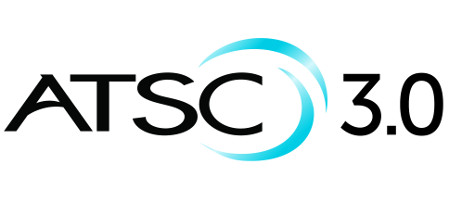FCC Approves Next-Gen TV For OTA Broadcasting
WASHINGTON—The FCC today by a 3-2 vote along party lines authorized broadcasters to begin on a voluntary basis over-the-air transmission of next-generation television based on the ATSC 3.0 standard.

The action is widely seen as a critical milestone in the years-long effort to introduce a new over-the-air television standard that is more efficient and better positions TV broadcasters to compete in today’s digital media environment.
“Today is a promising day for consumers, an exciting day for technological innovation and a historic day for the broadcast business,” said FCC Chairman Ajit Pai in a statement before the commission vote to authorize ATSC 3.0.
Authorization “open[s] the door to substantially improved, free over-the-air broadcast television service and fiercer competition in the video marketplace,” he said.
The vote requires broadcasters choosing to begin voluntary ATSC 3.0 transmission to partner with another broadcaster to simulcast ATSC 1.0 service to ensure OTA viewers of legacy DTV maintain their service.
In authorizing next-gen TV, the agency is requiring 1.0 simulcasts to deliver “substantially similar” programming as the 3.0 channel for five years. However, the vote provides for certain exceptions, such as ads, promos for upcoming programs and programming features that takes advantage of new 3.0 capabilities.
The FCC vote maintains mandatory carriage rights of the legacy DTV simulcast on cable and satellite TV systems, but does not require it for broadcasters’ next-generation TV service.
The professional video industry's #1 source for news, trends and product and tech information. Sign up below.
The vote adds ATSC /321:2016 system discovery and signaling (bootstrap) and A/322:2017 physical layer protocol standards to the FCC rules for the purpose of interference calculation. The new rules require broadcasters use A/322 only for their primary streams and opens the possibility of sun-setting the requirement after five years.
The vote imposes the same public interest obligations required of existing TV broadcasts on next-generation TV service. It also requires broadcasters to provide on-air notifications to educate viewers about next-gen TV deployment and simulcasting.
LPTV and translator stations will be allowed on a case-by-case basis to seek waivers to the simulcast requirement if no viable simulcast partner is available.
In opposing authorization, FCC Commissioner Mignon Clyburn took issue with the lack of backwards compatibility of the next-gen TV standard with ATSC 1.0. Consumers’ existing TVs and cable equipment “will not be able to receive a next-gen signal.”
“If you are an over-the-air viewer, you will either need to purchase a new television set or some sort of converter, and if you are a pay TV viewer you would need to purchase a new set-top box,” she said.
While acknowledging “there is a lot to be excited about” when it comes to next-gen TV, such as UHD pictures, immersive audio, advanced emergency alerts and innovative interactivity, Commissioner Jessica Rosenworcel echoed Clyburn’s concern about the lack of backwards compatibility with ATSC 1.0 and the cost to consumers.
“I think the way the FCC plans to proceed is no great boon for consumers: it’s a tax on every household with a television,” she said, calling upon the agency to go back to the drawing board and find “a less disruptive way to facilitate broadcast innovation.”
However, FCC Commissioner Michael O’Reilly took issue with viewing ATSC 3.0 as a tax on consumers. “I believe this item [the ATSC 3.0 authorization rulemaking] has taken great care to ensure that is not the case,” he said. “Indeed, if this is a consumer tax, so is every new tablet or smartphone a consumer decides to purchase.”
The “parade of horribles and hypotheticals” some have offered up over the past few weeks that will stem from next-gen TV authorization are “divorced from reality because broadcasters have every incentive in the world to make sure their viewers do not lose signal during and after any transition to 3.0,” said O’Reilly.
In his comments before the vote, Commissioner Brendan Carr pointed out the FCC has been “moving steadily away from dictating” use of specific technologies in the standards setting process. He pointed to the wireless sector as an example where the agency has adopted flexible-use licenses and other market driven advancements that steer clear of using specific devices.
“Today, we move slowly in that direction by allowing broadcasters to use a new standard for next-generation TV known as ATSC 3.0. By granting their request, we give broadcasters the freedom to innovate,” he said.
For a comprehensive list of TV Technology’s ATSC 3.0 coverage, see our ATSC3 silo.
Phil Kurz is a contributing editor to TV Tech. He has written about TV and video technology for more than 30 years and served as editor of three leading industry magazines. He earned a Bachelor of Journalism and a Master’s Degree in Journalism from the University of Missouri-Columbia School of Journalism.

